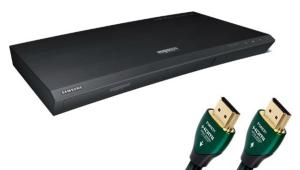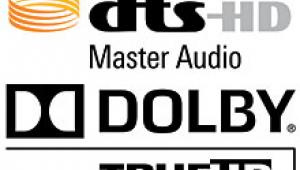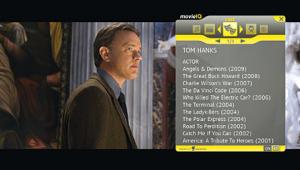So You Just Got a Blu-ray Player?
I think it’s safe to say that Blu-ray’s early adopter period is finally over. The high-def video disc will celebrate its fourth anniversary on the market in June. Although it hasn’t caught up to DVD yet, the format has grown tremendously. It’s now firmly entrenched in the mainstream. Like many others, you may have waited for the product to work out its kinks before you joined the Blu-ray revolution. Now is a great time to hop aboard. Aside from the obvious benefits of high-definition video and lossless audio, Blu-ray also offers a host of interactive features that distinguish it from DVD and (hopefully) improve the user experience. The following primer will provide an overview of these features and how they work.

The Business with Profiles
Those of us who’ve followed Blu-ray from the beginning can tell many stories about what a bumpy ride its first few years were. One of the format’s biggest stumbling blocks was with its hardware profiles. Blu-ray interactivity is based on a form of Java programming called BD-J. Unfortunately, not all Blu-ray players are compatible with all BD-J features. Instead, the hardware is divided into tiers called profiles. All Blu-ray players, regardless of profile, can access the traditional supplemental materials (supplements) you might find on DVD. This includes audio commentaries, deleted scenes, and documentaries. However, advanced interactive features require the higher profiles.
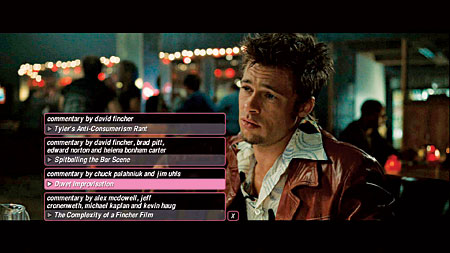
Manufacturers categorized the earliest Blu-ray players as Profile 1.0, or the Grace Period Profile. These machines could perform basic interactive functions such as pop-up menus and simple graphic overlays, but they didn’t have a picture-in-picture (PiP) decoder or Internet connection. Profile 1.1 became the Final Standard Profile in November of 2007. Profile 1.1 includes a PiP decoder, a secondary audio decoder for the soundtracks associated with PiP video, and at least 256 megabytes of local storage. On a Blu-ray Disc, Profile 1.1 features are called Bonus View. Finally, Profile 2.0 (or BD-Live) adds an Internet connection and a larger 1 gigabyte of storage.
By this point, Profile 1.0 has been phased out. All Blu-ray players sold after November of 2007 must meet at least the Profile 1.1 specification. While BD-Live remains optional, most players that are currently on the market offer that as well. By and large, the confusion surrounding profiles is no longer the burden it once was. You just need to look for the specific phrase BD-Live when you purchase a player. A simple notation that the player supports Java functions isn’t sufficient by itself.

Of course, a great number of early adopters purchased and may still own legacy Profile 1.0 units. Many of those wind up sold on the used market. These machines should be able to play the movie, all of the traditional supplements, and even many basic interactive features. But they can’t play any features that require a PiP decoder or Internet log-in. Sadly, you can’t upgrade a Profile 1.0 standalone disc player to a higher profile with a firmware update. It lacks the decoding chips or Internet connection to make that possible. Of the first-generation players, only Sony’s PlayStation 3 has the necessary hardware to advance from one profile to another. The console originally started as Profile 1.0, but it has moved all the way up to BD-Live (and rumors persist that it could be upgradeable to 3D in the future). No other player can boast that.
Pop-Up Graphics and More
Not all Blu-ray interactive features require Bonus View capability. Even some features that you might instinctively describe as picture-in-picture may not need it either. With or without Bonus View, the basic BD-J programming in all Blu-ray players can overlay graphics or still images on top of a moving picture. In its most fundamental application, this provides the interactive pop-up menus that are available on almost all Blu-ray Discs. Unlike DVD, you don’t need to pause the movie to access a menu screen or change settings. It happens in real time as the title continues to play.
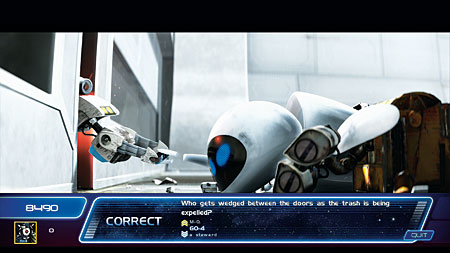
Sometimes these graphic overlays are used for supplements. Some discs offer running pop-up trivia in a much nicer presentation than the generic subtitle font used on DVD. This can be as simple as the Feature-Length Trivia Fact Track text boxes at the bottom of the screen on The Fifth Element. Or, it can be as elaborate as the Library Computer interface on Paramount’s classic Star Trek: Original Motion Picture Collection. The Star Trek feature scrolls a selectable list of topics along the side of the screen in sync with the scene you’re watching. If you choose one of the topics, it will expand with detailed information. Master and Commander: The Far Side of the World has a Historical and Geographical Trivia Track that’s presented in large graphics that resemble parchment. The same disc offers a pop-up map that displays each scene’s global location. Other Blu-rays may include storyboards or production photos, which you can often view simultaneously with an audio commentary.
BD-J can work on standalone supplements as well, but it doesn’t work with those you watch during the movie. Many Disney and Pixar animated titles are loaded with simple Java-based games aimed at kids. For the slightly older set, the Comic Book Builder in Hellboy II: The Golden Army lets you grab still frames from the movie, apply captions, and arrange them in a comic page layout. Many of these games are clearly time wasters. However, The X-Files: I Want to Believe has a nifty Complete Timeline interactive database that tracks every event in X-Files mythology. It arranges them by episode order, chronological order, or theme. You can get lost in that for hours.
Bonus View: True Picture-in-Picture
The graphic features described above may overlay a movie during playback, but they aren’t true PiP supplements and don’t require a Bonus View–capable player. Real Bonus View can play a live video clip (usually with corresponding audio) simultaneously with the movie. This requires secondary video and audio decoders. The most straightforward use for this is a video commentary, such as the one on The Hangover. Not only can you listen to the audio commentary, but you can see the participants when they recorded it. When done well, their interactions add an extra level to the entertainment.

PiP can also present behind-the-scenes or making-of clips in sync with the scene being discussed. 300: The Complete Experience offers raw green-screen production footage for direct comparison with the finished product. Frequently, these PiP clips are interspersed with simple graphic overlays or trivia between video segments. The Starfleet Access Episodes on Star Trek: The Original Series (Seasons 1 and 2) exemplify this feature. Different studios may utilize somewhat different designs or execution for these features, and they often brand them with proprietary names. For example, Warner has an In-Movie Experience on titles like Batman Begins and The Ultimate Matrix Collection. Meanwhile, Disney prefers the name Cine-Explore on Cars and Ratatouille. Universal uses U-Control on many of its titles.
Recently, Warner has taken its PiP interactivity up a notch with the Maximum Movie Mode on Watchmen: Director’s Cut and Terminator Salvation: Director’s Cut. We don’t just get the usual pop-ups inside the movie images. At certain points, the film’s director appears on screen between two windows, with the movie on one side and behind-the-scenes footage on the other. The director can manipulate the content of each window; he can even pause or reverse the film to demonstrate a point. It’s a neat effect that shows off some of Blu-ray’s potential.
Every Rose Has Its Thorns
Blu-ray interactivity can have some drawbacks. I certainly wouldn’t classify any of them as deal breakers. These are more like minor nuisances. The most immediately noticeable is the fact that Java-enabled discs tend to load slowly in Blu-ray players, especially standalone models. The PS3 remains a benchmark for fairly quick disc loading times. In recent hardware generations, some other manufacturers have met or exceeded Sony’s standard. Nevertheless, some Java-heavy discs like Ratatouille can take a few minutes to load before the disc menu comes up, even on the fastest players. On slower players, the wait can feel interminable, especially to viewers who expect a speedy DVD-like response.
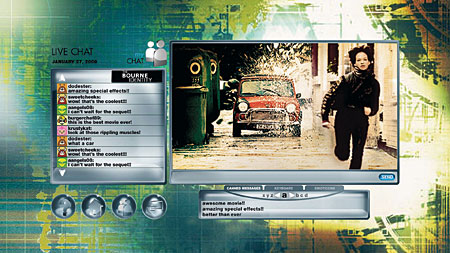
Perhaps even more annoying is the confusion about how to make PiP audio work on a Blu-ray player with bitstream audio transmission. A Bonus View disc’s PiP content has a separate audio channel that the player must mix with the movie soundtrack in real time. In order to do that, you need to set the player to internally decode all audio. A player set for bitstream transmission will only send the movie’s primary soundtrack. Secondary audio isn’t part of the original bitstream, and it won’t be transmitted. In order to turn on the Secondary Audio function, most Blu-ray players require that you stop disc playback to make adjustments in the machine’s setup menus, then restart the disc afterwards. (As far as I know, only the OPPO BDP-83 lets you access and adjust the setup menu on the fly while a disc continues to play.) Although there may be a Secondary Audio button on the player’s remote, that button will only turn on PiP audio if you’ve first enabled the feature in the setup menu. After the Bonus View content is finished, you must go back to the setup menu and turn off the secondary audio decoding. This is an inconvenience and a needlessly confusing design implementation. However, the process does work once you understand this quirk.
The examples above are just a sampling of the interactive features that Blu-ray offers. No doubt, the industry will develop even more inventive uses for this technology in the future. We haven’t even broached the subject of Internet-driven BD-Live features yet. We’ll save that topic for another article.
- Log in or register to post comments
